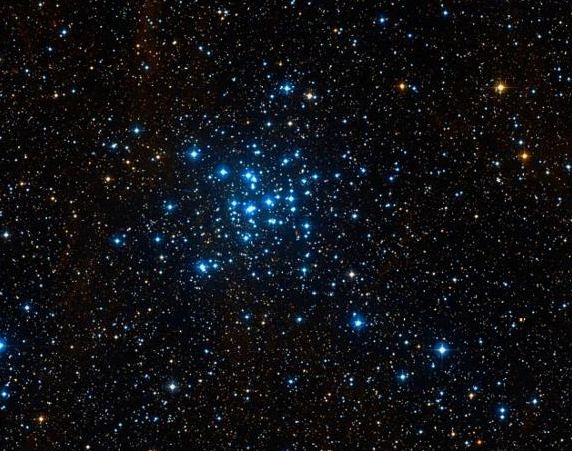M36, also known as the Pinwheel Cluster, is an open star cluster located in the northern part of the constellation Auriga, visible from the Northern Hemisphere. It is situated approximately 4,100 light-years away from Earth.
First discovered by the Italian astronomer Giovanni Battista Hodierna before 1654, M36 was later rediscovered by Charles Messier in 1764. He included it in his catalogue of deep-sky objects as Messier 36. Below are some key details about this fascinating cluster:
Physical Characteristics
M36 is classified as an open star cluster, meaning it consists of stars that formed from the same molecular cloud and are loosely bound together by gravity. The cluster contains several dozen stars, primarily young, hot blue stars, with a few cooler, redder stars mixed in. These stars share a common origin and are still gravitationally bound to each other, although over time, gravitational interactions between them may cause the cluster to slowly disperse.
With an estimated age of 25 million years, M36 is relatively young compared to many other star clusters. The cluster’s stars are still in the early stages of their stellar evolution, and this youth contributes to the cluster’s vibrant and striking appearance. The stars in M36 are distributed in a distinctive pinwheel shape, arranged in a spiral or fan-like pattern, making it visually unique. The cluster spans about 14 arcminutes in the sky, which is roughly half the apparent size of the full Moon.
Observation
With an apparent magnitude of 6.0, M36 is just visible to the naked eye under exceptionally dark skies. However, it is more easily observed with binoculars or a small telescope. The cluster’s relatively bright stars and its visually appealing structure make it a popular target for amateur astronomers.
The best time to observe M36 is during the winter months in the Northern Hemisphere, from November to February, when the constellation Auriga is well-placed in the evening sky. Auriga is visible for long periods during these months, reaching its highest point in the sky around midnight. M36 can be located with the help of a star chart or astronomy app, making it an accessible object for stargazers and astrophotographers alike.

Overall, M36 is a beautiful, young open star cluster that is both visually striking and relatively easy to observe. Its unique pinwheel shape and brightness make it a favourite among both amateur and experienced astronomers.



